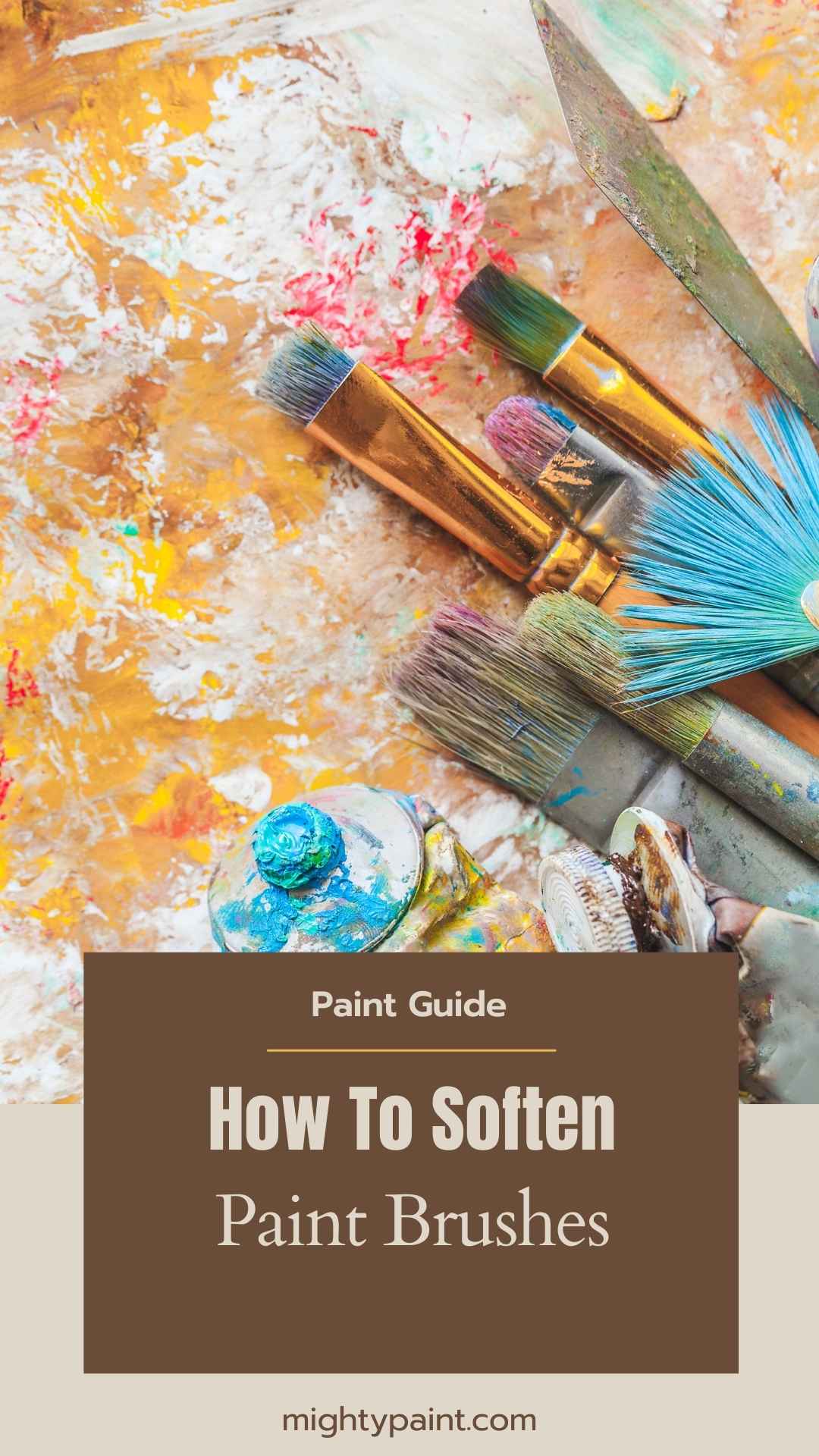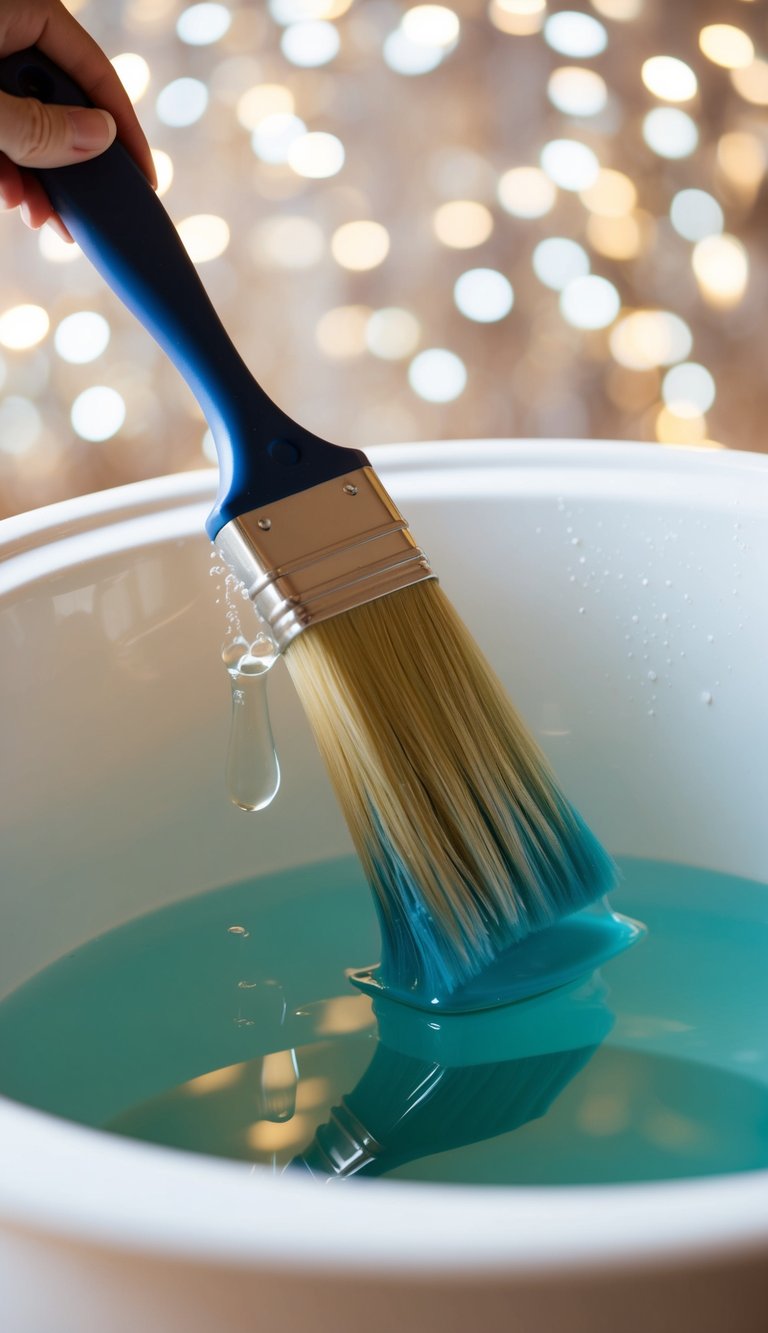How To Soften Paint Brushes for Better Painting Results
If you’ve got hard or stiff paint brushes, you’re not alone. Many artists face this issue at some point. To soften paint brushes, you can use simple methods like soaking them in vinegar or vegetable oil before cleaning. These techniques can breathe new life into your favorite tools, making them easy to work with again.

In this post, you’ll discover practical ways to restore your brushes without needing fancy products. Whether you’ve let your brushes sit too long or just want to keep them in top shape, these tips will help you get back to painting smoothly. Get ready to bring those bristles back to life!
Understanding Paint Brushes
Knowing about paint brushes can help you make better choices for your projects. Each type and material offers different benefits depending on the paint you’re using.
Types of Paint Brushes
There are several types of paint brushes, and each has its purpose. Here are some common ones:
- Flat Brushes: These have a wide, flat head. They work well for large areas and are great for applying latex paint.
- Filbert Brushes: These have a rounded tip and are perfect for blending and soft edges, especially with oil-based paint.
- Round Brushes: These are thin and pointy. They are ideal for details and fine lines.
- Angle Brushes: These have slanted bristles for getting into corners and edges.
Choosing the right brush matters. Using a brush designed for the paint type can make your work easier and improve your results.
Materials Used in Paint Brushes
Brushes are made from a variety of materials, which also affect their performance. Here are the main types:
- Natural Bristles: These come from animal hair and are great for oil paints. They hold more paint and provide a smooth finish.
- Synthetic Bristles: Made from nylon or polyester, these are perfect for water-based paints like latex. They resist damage and are easy to clean.
- Blend Brushes: These have a mix of both bristles. They offer versatility and can work well with various paint types.
When selecting your brush, consider the paint you plan to use. The right materials can enhance your painting experience and results.
Preventative Maintenance for Paint Brushes
Taking care of your paint brushes helps them last longer and stay effective. Here are some simple tips to keep your brushes in great shape.
1. Rinse After Each Use
Always rinse your brushes right after using them. Use warm water to remove as much paint as possible. This will prevent paint from hardening and damaging the bristles.
2. Use the Right Cleaner
For oil-based paints, use turpentine or a suitable solvent. For water-based paints, soap and warm water work well. Choosing the right cleaner can help keep your brushes soft.
3. Store Properly
When you’re done, store your brushes upright in a container or hanging, bristles facing up. Avoid laying them flat, as this can ruin the shape of the bristles.
4. Condition the Bristles
Occasionally, soak your brushes in a small amount of vegetable oil or brush conditioner. This keeps the bristles soft and prevents them from drying out.
5. Avoid Extreme Temperatures
Keep your brushes away from hot surfaces or direct sunlight. High temperatures can warp or damage the bristles.
Initial Cleaning of Paint Brushes

Cleaning your paint brushes right after use is essential. It helps maintain their shape and usability, ensuring they last longer. Here’s how to tackle both wet and dry paint.
Removing Wet Paint
Start by rinsing your brush under warm water. This step removes most of the wet paint. Be sure to use the softest stream possible to avoid damaging the bristles.
Next, you can use warm soapy water for a more thorough clean. Mix a few drops of dish soap into the water and gently swirl the brush around. This helps break down any remaining paint.
Afterward, rinse the brush again until the water runs clear. For stubborn paint, consider using a wire brush to gently comb through the bristles. Be careful not to pull too hard, as this can ruin them. Always reshape the bristles before letting them dry.
Eliminating Dry Paint
If your brushes have dried paint, you’ll need a different approach. Soak the bristles in paint thinner for a few minutes. This will help dissolve the dried paint.
After soaking, use the warm soapy water method mentioned earlier. Gently rub the bristles against the bottom of a container. You can use your fingers to help remove any leftover paint.
Rinse the brush again and repeat these steps if necessary. Finish by reshaping the bristles and laying the brush flat to dry. This method ensures your brushes stay in good shape for the next time you paint.
Softening Techniques for Hardened Brushes

When your paintbrushes become hard, it can feel frustrating. Luckily, there are effective methods to restore them to their soft state. You can use various solvents or natural softening techniques to bring your bristles back to life.
Using Solvents
Solvents are helpful for breaking down dried paint and restoring your brushes. A popular choice is turpentine. Simply pour some turpentine into a container and soak the brush for about 15-30 minutes.
Another effective solution is lacquer thinner. Dip the bristles in lacquer thinner and let them sit, then gently comb through the bristles with your fingers. This will help loosen the paint.
If you prefer a milder option, white vinegar can also work well. Heat some distilled white vinegar and soak the brush. Vinegar’s acidity helps to soften the hard bristles. After soaking, rinse and reshape the brush for best results.
Natural Softening Methods
If you want to avoid chemicals, natural methods are effective too. One great option is soaking your brushes in warm water mixed with mild dish soap. Let them soak for an hour before rinsing. This helps loosen paint without harsh chemicals.
You can also use vegetable oil. Coat the bristles with oil and let them sit for about an hour. The oil penetrates the bristles, making them soft and pliable again.
For even better results, try combining methods. For example, you can soak your brush in vinegar first, then wash it using dish soap. This two-step process can be very effective for stubborn brushes.
Caring for Brushes After Softening
After softening your paint brushes, it’s important to take the right steps to keep them in good shape. Proper care will extend their lifespan and help maintain their performance.
Rinsing and Shaping
Begin by rinsing your brushes in warm soapy water. This helps remove any remaining paint and cleaning solution. Make sure to work the bristles gently under the water, allowing the soap to break down any residue.
Once clean, squeeze out the excess water without pulling on the bristles. It’s best to reshape the brush head while still wet. Use your fingers to gently mold the bristles back into their original shape. This is key to ensuring your brush works well next time you paint.
Proper Storage
To keep your brushes in prime condition, how you store them matters. Avoid standing brushes on their bristle ends. This can damage the bristles and alter their shape. Instead, lay them flat on a clean, dry surface.
If you have a brush holder, store them upright with bristles facing up. This allows air to circulate and keeps them dry. Remember to keep your brushes away from direct sunlight and heat sources. These elements can warp the bristles over time.
Frequently Asked Questions
Many people face issues with stiff paint brushes. Here are answers to common questions about how to soften and restore your brushes for better use.
What is the best method to restore the softness of my paint brushes?
Soaking your brushes in hot vinegar is a great way to soften them. The heat helps break down any hard materials, making the bristles more flexible and usable again.
Can I use household ingredients to soften my paint brushes?
Yes, you can use household items like vinegar or hair conditioner mixed with warm water. These are effective and easy to find in your kitchen or bathroom.
What techniques are recommended for softening stiff acrylic paint brushes?
To soften stiff acrylic brushes, submerge them in warm water mixed with a bit of dish soap. Let them soak for around 15-20 minutes. This helps break down the dried paint.
How do I prevent my paint brushes from becoming hard and unusable?
Always clean your brushes right after use. Rinse them in warm water and reshape the bristles. Store them upright or flat to avoid damaging the bristles.
Is it possible to rejuvenate hardened oil paint brushes, and if so, how?
Yes, you can rejuvenate hardened oil brushes by soaking them in a mixture of vegetable oil and a brush cleaner. This mixture can help break down the tough paint and restore the bristles.
Are there effective methods for softening paint brushes and rollers?
In addition to vinegar and conditioner, you can also try soaking them in warm water with a few drops of fabric softener. This can help restore the bristles’ flexibility and make your brushes ready for use again.
